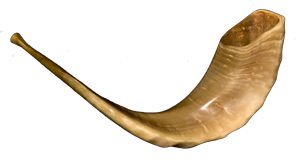ICJudaism: A Teacher’s Guide to Judaism
Hosted by ICTeachers Formerly: Mike’s Rough Guide to Judaism
Disclaimer:
The contents of these pages represent the author’s personal views, experience and
understanding.
There are bound to be some things here that some Jews would disagree
with.
Rosh Hashanah
Rosh Hashanah is the Jewish New Year. Rosh = head; shanah = year -
1st Nisan is the New year for Kings, used to calculate the number of years a king had reigned;
1st Elul is the New Year for Cattle, when herds were counted for tithing purposes;
15th Shevat is the New Year for Trees (trees have symbolic significance for Judaism);
1st Tishrei is the New Year for Years -
This multiplicity of new years is not so dissimilar from the secular world’s variety of new years (eg. the new school year, the new financial year etc.)
The 2 day festival of Rosh Hashanah begins on the first day of the Jewish month of Tishrei and marks the beginning of the period known as the 10 days of Repentance or Days of Awe (Hebrew: Yamim Noraim); we usually refer to this period as the High Holy Days. It is a time for reflection and introspection rather than for celebration. There is a particular focus on putting right the things we have done wrong during the preceding year (especially on making apologies to people we have hurt or wronged). The morning synagogue service is rather like a Shabbat service, extended by the inclusion of a number of prayers which are particular to the season. There is also a lot more music in the service than usual, much of it having particularly beautiful, introspective melodies as befits the season. Many congregations employ extra singers for the High Holy Days.
Shofar
The service also includes several soundings of the shofar (ram’s horn) which serves as a warning trumpet or call to repentance.

Blowing the right sequence of notes on a shofar is quite a skilled job (it is blown in the same way as a trumpet by blowing "raspberries" into it, but the mouthpiece is small and it takes a lot of force (and a lot of breath!) to get a good note.
Some communities have a resident expert. Ours has what I think is the lovely custom of having a different person blow each set of blasts, most of the blowers being teenagers (mainly those who are learning to play brass instruments).
Apples & Honey
It is traditional, at Rosh Hashanah, to begin our meals with slices of apple dipped in honey (apples to remind us of the season and honey to remind us of the hope for a sweet year ahead). In my own family, Rosh Hashanah breakfast is always toast and honey topped with slices of apple.
At Rosh Hashanah Jews will greet each other with the words, “Shanah tova” (“A good year”) which is short for L’Shana tova tikatev meaning May you be inscribed (ie. in the Book of Life) for a good year.
Like other important festivals Rosh Hashanah is considered to be a Shabbat when no work may be done.
The earliest date in the Gregorian calendar that Rosh Hashanah can fall is 5th September; the latest is 5th October.
